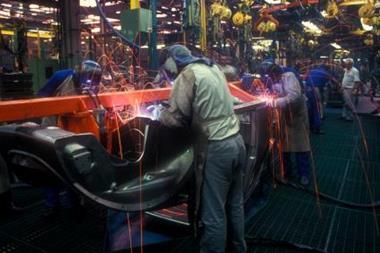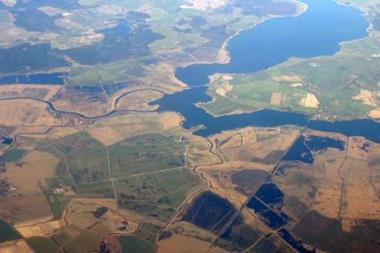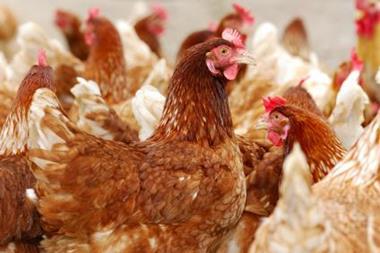What are the chief risks facing a major food retailer and how can they be managed? Airmic's former chairman gives us the rundown
How much of your role is insurance buying and how much is hands on risk management?
We don’t purchase a huge amount of external insurance in the market because we self fund a lot of our own risks, some through a captive (domiciled on the Isle of Man) and some through other self funding arrangements. Probably about 15% of my total spend is external insurance. We tend to insure catastrophe type exposures and then manage those risks which are more relevant for us to look after. Each year we work out a level of risk that we are comfortable with so we are not pound swapping with the insurers.
How does risk management work within your organisation?
We have a number of different risk support functions. And, generally, all of the company is geared towards the overall goals and values of the company, which are primarily around how we can best serve the customer. That is our critical success factor.
From a pure risk perspective, it’s what are the things that can impact on our success? Some of them may be the traditional physical loss issues: fire, theft, and flood risks. Then you would have difficult business risks that could be competitor activity. Then the wider business continuity risks, which could vary from the floods that we had last year, to pandemic planning.
What we try to do is work primarily on a project basis with the other risk support functions – health and safety, business continuity, security – and we morph into a project team depending on what the particular risks are.
We always work with the actual practitioners to try and make sure there is direct accountability and responsibility for owning the specific risks.
How did the disastrous summer floods affect you?
They didn’t actually affect us from a property perspective. Thankfully none of our stores were damaged. I think it was that old risk management strategy – luck.
Having said that, obviously our stores are part of the community. In Chesterfield the store remained open for two days and people actually stayed in the store while their houses were under the water.
We had other problems, such as: How can our customers get to the store? How can our colleagues get to the store? If there was no water in a particular area we couldn’t open our food counters, because we needed people to be able to wash their hands. In the west country I think we had six stores that were affected.
There were also issues concerning our supply chain. Most of Lincolnshire was underwater and that’s where we get most of our vegetables, so obviously that had some knock on implications for future supply.
Our buying strategy was also affected. In the summer we’d sell more cold drinks and salads than in the winter. So our buying strategy would be based around those types of products. But when it’s cold people switch to soups and more wholesome meals. Having said that, with the vagaries of the British weather, flexibility is something that the supply chain planning team are adept at.
We also had the issue surrounding home delivery. Are we asking our drivers to go to places where they could be in danger? That’s a huge area to consider as well.
So it wasn’t without its challenges but generally we came through it pretty well.
What kind of pandemic planning do you have in place?
With the business continuity team we have a series of exercises each year. We started pandemic preparations two or three years ago. It does tend to come up and down the list of risks, depending on what time of year it is. I think the overall awareness of it has grown and over the last couple of years particularly there has been much more of a multi agency approach to it.
“If you are reducing the amount of energy you use then you are reducing the overall energy bill.
What other risks are you focused on at the moment?
I think the whole environmental issue is a key topic at the moment, both in terms of public awareness, but also with regard to the spotlight that is on all company’s corporate responsibilities. We employ 153,000 and have 16.5m people visiting our stores every week. If you take those two things together we are a key part of the community. Food is obviously something that people buy more regularly than other products, so I think the whole issue of packaging has a knock on effect for us. People expect you to be responsible in the way that you have packaging around your products. Then there’s the associated area of food waste. People want good availability when they come into our stores, but it is a key ask to make sure there is good availability but not huge waste.
From a purely physical loss perspective the more packaging we have in stores the more potential sources of ignition there could be for a fire. So the reduction of packaging is actually quite good because it reduces the potential source of risk. I think that’s a really good example of a business imperative actually improving things from a physical loss perspective.
Another example of a knock on benefit is reducing the number of deliveries to our stores. Obviously with fewer deliveries there is less environmental impact and from a physical loss perspective there is less chances of that vehicle being involved in some form of accident. That’s another spin off benefit.
Tied in with the environmental issue is the idea that consumers increasingly want supermarkets to use sustainable local community products. Is that a problem?
I think it’s because the UK has become a lot more regionally focused – people expect more local products. If you’re in Cornwall you’d like to get Cornish products because that’s what you’re particularly proud of. It makes business sense to offer these products, but it also introduces some challenges. Food retailers in particular have always been good at sourcing globally because we can’t grow certain things in this country. But now we are also looking at using a lot more smaller local producers.
If you’re not living up to some of these consumer expectations, are you exposing yourself to a reputational risk?
It’s probably the flip side of that actually. Being the largest supplier of Fair Trade products is a reputational opportunity for us. Last year we moved to 100% Fair Trade bananas, which cost the company just over £4m. The decision seemed to fit with the overall company ethos, goals and values, so it was a price worth paying. Whether we will reap the full benefit of that remains to be seen. But we decided it was a price worth paying.
Does the company report its carbon emissions?
We do an annual environmental report. Again, a lot of these things are not just buzzwords they make good corporate sense as well. If you are reducing the amount of energy you use then you are reducing the overall energy bill. We are in an incredibly competitive sector with some world class competitors, and I think it’s only by addressing those sort of issues that you can continue to compete.
What are the implications for your supply chain from instability in different parts of the world and how do you manage that?
We try to manage it by having very few, if any, single sources of supply. By having a ready source of alternatives you can de-risk it as much as possible. I don’t think you can ever say it’s totally solved. Generally there will be other areas that you can switch to in the event of a problem in one particular area.
There is a potential colleague risk there as well. Obviously our product teams and our buyers will be going around the world to see the suppliers and bring back new and different products. We have to be mindful of their personal safety if there is something happening in a particular country.
What about product liability risk? Lloyd’s has said that in Europe the compensation culture is expanding? The European Commission has said it is committed to improving consumer redress, and there’s talk of class actions. What are your concerns in that area?
You could say the product liability risk is offset by not actually producing anything ourselves. Having said that, we are the retailer and therefore the reputational risk is with us. Actually as standards improve, more withdrawals take place because of quality issues. It could be that the taste wasn’t as good as we wanted it to be. With the whole awareness of various food allergies that too could be a potential issue. Going back to packaging, as packaging is reduced you may have a withdrawal on the basis of suitability of packing, for example if we are finding that a lot of products are being returned by customers because they are damaged. Those areas are quite important issues. At present, we don’t have a vast amount of product liability issues. That could change, so I don’t want to tempt fate.
What about macroeconomic risks that are out of the control of individual risk managers?
Well it’s certainly a key area at the moment, I think we are probably just about seeing some of the impact of the UK summer floods in the availability of vegetables. You’re certainly seeing an impact on rice prices at the moment. 25% of the rice crop from Asia was lost this year. If you have something that affects a staple product, it will have a big impact. You can see the impact of fuel charges at the moment. Obviously if the prices are increasing then that will increase our delivery costs, and in a competitive environment that has to be absorbed rather than passed on. That could have implications depending on how long it continues. Most people fix their energy for a period of time, and if you’re coming out of a fixed deal then you will find a spike in the prices. Having said that, we are not in a sector of the market that would be catastrophically affected by a slowdown. People do need to eat; they might not necessarily have to eat with us, but they do need to buy food. And there could be some opportunities, if people think ‘actually we won’t go out for a meal but we’ll have a bottle of wine and a nice meal at home’. That could have some knock on positive effects for us. But yes, you can’t divorce yourselves from what’s happening elsewhere in the outside world.



















No comments yet